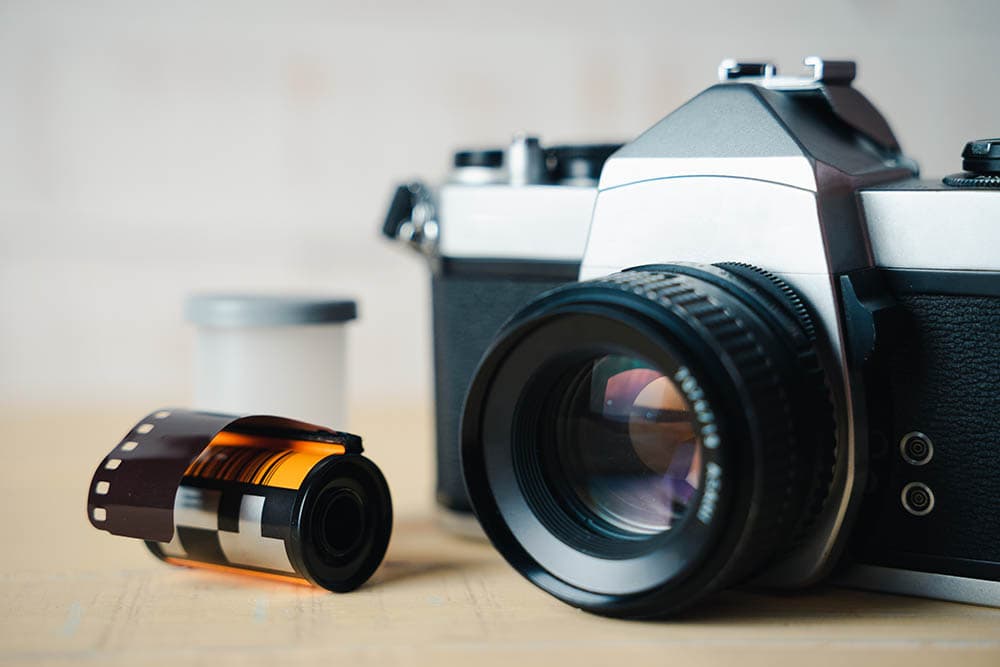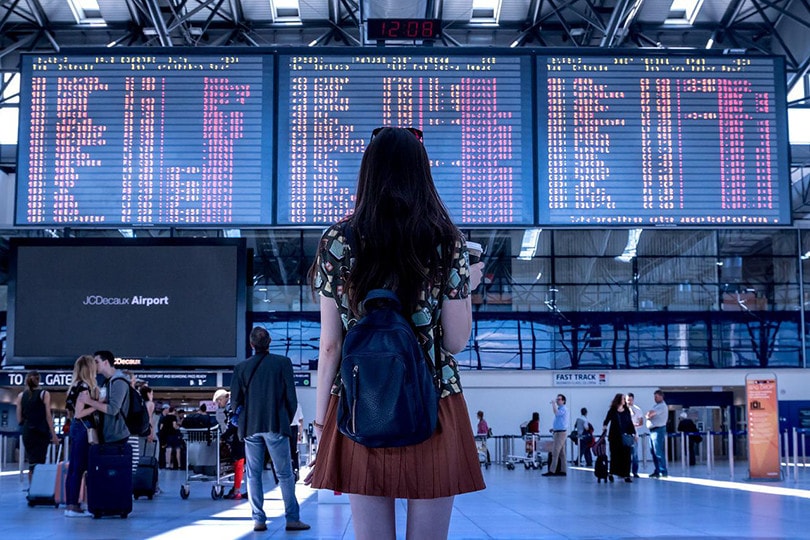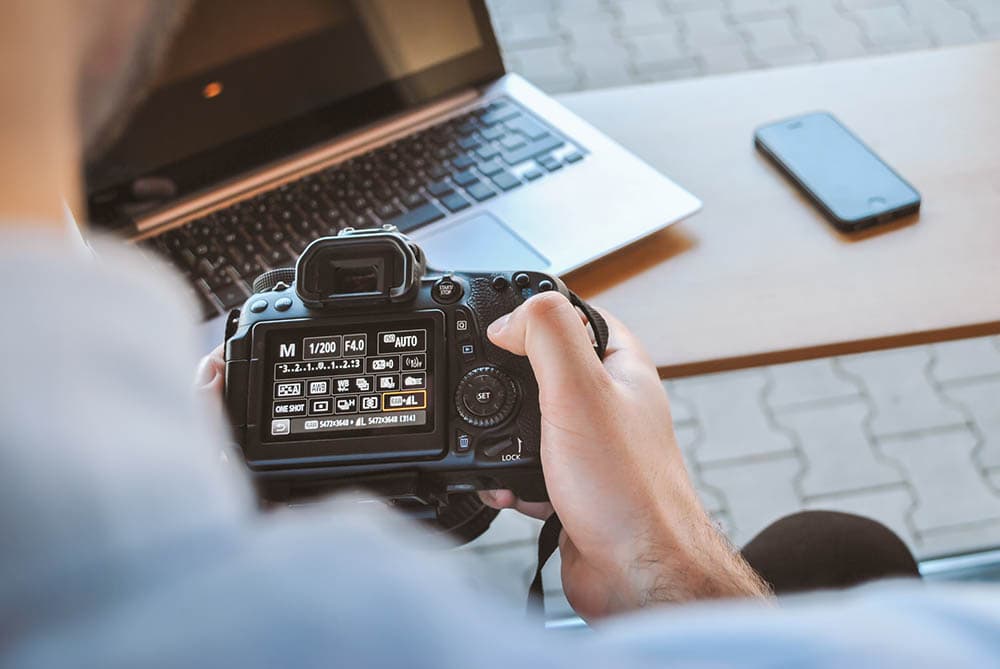Can You Bring a Camera on a Plane? Everything You Need to Know
Last Updated on

Flying can be a stressful time, and it’s common to have a hundred different questions about what you can and can’t do on a plane. The good news is that you can bring a camera onto a plane, but there are a few special precautions that you should be aware of.
Here, we broke down everything that you need to know about flying with a camera, so you can get from point A to point B without any hiccups and enjoy your trip!

Can You Bring a Camera on a Plane?
Yes! There are no TSA regulations against bringing a digital camera onto a plane. In fact, TSA states that you can include digital cameras in both checked and carry-on luggage.
So, if you’re worried about whether you can bring a camera on a plane, the answer is yes.

How to Get a Camera Through Airport Security
While you can take a camera onto a plane, there are a few precautions that you should be aware of, particularly when getting through the TSA security checkpoint.
You will need to remove your camera from your bag when going through the checkpoint. Put the camera in its bin with nothing on top of it when it’s going through the X-ray machine. This enables the X-ray to get a good view of everything inside the camera.
While some newer TSA X-ray machines let you keep cameras and other large electronic devices with the rest of your stuff, they’re not widespread, and the TSA agent will let you know if that’s the type that they’re using. If they don’t tell you anything, take it out of your bag.

Can You Take Pictures on a Plane?
While there’s no federal law against taking photos on a plane, flight attendants and other crew members will often cite 49 U.S.C. 46504 as to why you can’t do it.
However, this regulation doesn’t state that you can’t take photos; it says that you can’t interfere with any of the attendant’s official duties. But attendants and airlines take this to mean that you need to follow their instructions, including them telling you to put your camera away.
Still, since there’s nothing against it, you can technically take photos until a crew member tells you to stop. If you’re only taking pictures of the world outside the window, they likely won’t care or even try to stop you. But if you’re taking photos of them or other passengers and making people feel uncomfortable, there’s a good chance that you’ll be asked to stop.
Can You Take Pictures Past Airport Security?
Yes! TSA regulations do limit what you can photograph to a degree, but they only highlight the fact that you can’t interfere with the agent’s duties or take pictures of things shielded from public view.
But as long as you’re not getting in their way or trying to photograph equipment that they use to screen passengers’ luggage, they shouldn’t give you any problems if you want to take a few pictures.

Can You Put a Camera in Checked Baggage?
While TSA does allow you to put a camera in checked baggage, they do have special requirements if your digital camera uses a lithium-ion battery.
Due to the additional procedures and steps required, it’s usually easier to put these batteries in your carry-on instead of your checked baggage.
Either way, airlines don’t have the best reputation when it comes to treating luggage nicely, so it’s probably best to put your camera in your carry-on regardless of the battery type that it uses.
Final Thoughts
While you can bring your camera on a plane, always ensure that you listen to the instructions of the flight attendants and TSA agents at the airport and on the plane.
Also, give yourself plenty of time at the airport to get through security and to your gate so you don’t have to worry about rushing around and potentially missing your flight!
- See also: How to Clean a Camera Lens
Featured Image Credit: Suriyawut Suriya, Shutterstock
About the Author Robert Sparks
Robert’s obsession with all things optical started early in life, when his optician father would bring home prototypes for Robert to play with. Nowadays, Robert is dedicated to helping others find the right optics for their needs. His hobbies include astronomy, astrophysics, and model building. Originally from Newark, NJ, he resides in Santa Fe, New Mexico, where the nighttime skies are filled with glittering stars.
Related Articles:
Can You Use Binoculars to Look At Stars? How to Choose the Right Pair
How to Clean a Refractor Telescope: Step-by-Step Guide
How to Clean a Telescope Eyepiece: Step-by-Step Guide
How to Clean a Rifle Scope: 8 Expert Tips
Monocular vs Telescope: Differences Explained (With Pictures)
What Is a Monocular Used For? 8 Common Functions
How to Clean a Telescope Mirror: 8 Expert Tips
Brightfield vs Phase Contrast Microscopy: The Differences Explained
